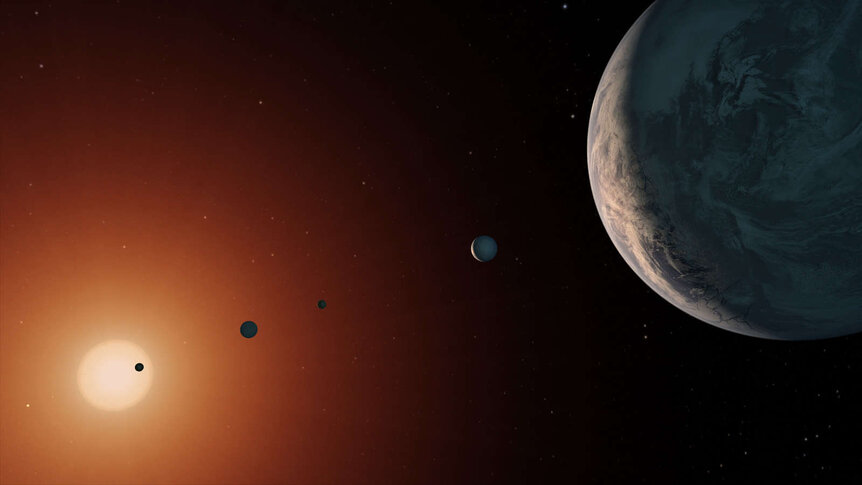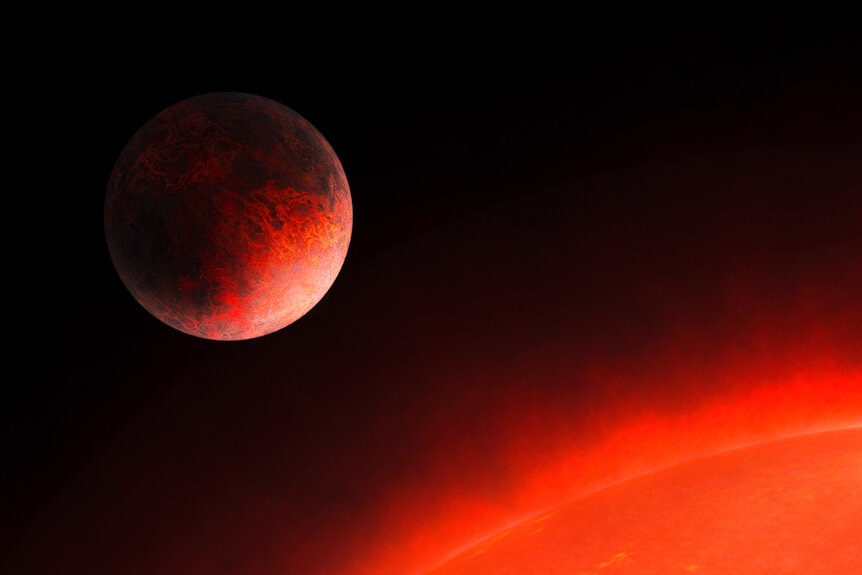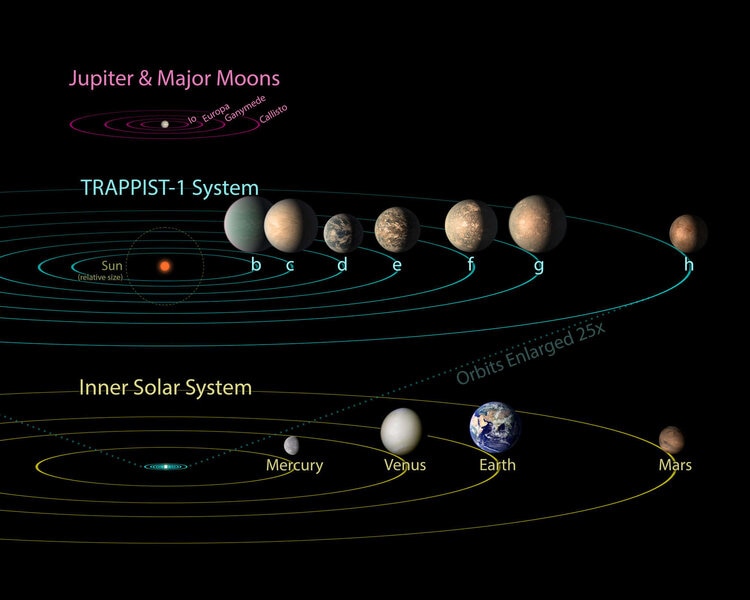Create a free profile to get unlimited access to exclusive videos, sweepstakes, and more!
A superhot superdense superfast mini-Earth… and it's practically next door
An iron exoplanet skims its star's surface.

Speaking of weird exoplanets, astronomers have another oddball planet, and it's seriously oddballish. It's smaller than Earth but extremely dense, and it orbits its host star very close in, so its "year" is far less than an Earth day. The good news is it's pretty close to us, galactically speaking, so follow-up studies should be possible.
The planet orbits a star called GJ 367, a red dwarf only 31 light years away from Earth. The star has about half the mass and diameter of the Sun and is much cooler, making it dim despite being practically in our stellar back yard — you'd need a telescope to see it at all.
However, the same star-formation processes that make red dwarfs are very good at making Earth-sized planets. We think that red dwarfs on average have 2-3 such planets (called terrestrial planets) each! Some may have none, but others have multiple such worlds orbiting them, such as the red dwarf TRAPPIST-1, which has seven.
GJ 367 may have many, but only one has been detected so far: GJ 367b. It was found by TESS, the Transiting Exoplanet Survey Satellite, which scans the sky looking for changes in brightness in relatively nearby stars. If we see a planet's orbit edge-on, once per orbit it passes in front of the star, creating a mini-eclipse (technically a transit), and the light dims. From this the size of the planet and some characteristics of its orbit can be determined.
GJ 367b was found in early 2019, and was interesting enough that the astronomers followed up with further ground-based observations to get spectra, breaking the starlight up into separate wavelengths (colors). The planet and star orbit each other, and the planet's gravity makes the star move in a small circle even as the planet orbits in a wider one. Sometimes the star moves toward Earth a little and sometimes away, so this induces a Doppler shift in the starlight that can be revealed in the spectra, which can be used to find the mass of the planet.
What they found is that GJ 367b is small, about 0.7 times Earth's diameter (so a little over 9,000 km wide) and a mass 0.55 times Earth's.
That's where things get interesting. This means the planet is very dense, about 8.1 grams per cubic centimeter. That's denser than iron! Earth's density is about 5.5 g/cc.
Mind you, water has a density of 1 g/cc, while ice is somewhat less. Rock is 2-3, and iron 7.9. So the average density of a planet tells you something about what it's made of. Modeling the internal structure of GJ 367b, the scientists find it likely has a very large iron core extending 86% of the way from its center to its surface and a rocky mantle on top of that.
This is very different from Earth, which has a core that goes roughly 50% out from its center, with a rocky mantle on top. In fact this makes GJ 367b more like Mercury, which has a large iron core and rocky layer above. The planet isn't so much a mini-Earth as it is a super-Mercury.
So that's weird. But there's more!
It's on a very tight orbit around the star, only about 750,000 km above its surface! That's only about twice the distance of the Earth from the Moon, and less than one percent the Earth's distance from the Sun. That means the planet zips around the star once every 7.7 hours... meaning its year is less than a third of an Earth day.
This makes it what's called an ultra-short period planet, and in fact it has one of the shortest periods known.
But it also means the planet is roasting. The star is cool for a star, but still sufficiently hot to heat up the planet to about 1,400° C (over 2,500° F). If there is any rock on the surface — or iron, for that matter — it's definitely molten. Overall it receives nearly 600 times as much irradiation from its star than Earth does from the Sun. Yow.
So why is this planet so weird?
That's a good question. The astronomers don't speculate in their paper but we can make some educated guesses. It may have been a more Earth-like planet that suffered a huge grazing collision from another planetary-sized body, for example. That could blast off the upper, lower density layers of the planet, leaving the denser iron core behind. That's a leading idea of why Mercury has a similar structure, too.
The orbit is a poser. It's difficult to get planets to form that close to their host star. Gravitational interactions with other planets could drop one from farther out into a closer orbit — planets orbiting red dwarfs tend to be crowded together much more than planets in our own solar system; the TRAPPIST-1 system mentioned above could fit all seven planets inside the orbit of Mercury. Perhaps the alleged grazing impact that changed it so much physically also played a role. But this is speculation and we'd need more data to understand what's what.
That may be forthcoming. Because the star is close-by and relatively bright, follow-up observations with different observatories should be possible. There's no indication of other planets in the system from the current data, for example, but long-term monitoring might reveal any as slight changes in the timing of GJ 367b's transits — the planets tugging on it makes the transits come a little earlier or later than predicted (this is called transit timing variations, and lot of planets have been inferred using this method).
This discovery has revealed the planet's existence and that it's strange. Hopefully keeping an eye on it will tell us why.





























